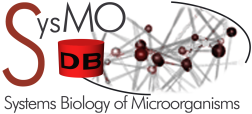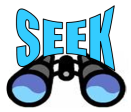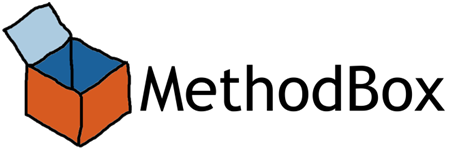ProductFamily
myExperiment is one of a family of products which provide solutions for the e-Laboratory. This page introduces the broader product family, which includes SysMO-db, MethodBox and the BioCatalogue. It is particularly aimed at potential collaborators.
Contents
The e-Laboratory Vision
An e-Lab is an information system for bringing together people, data and analytical methods at the point of investigation or decision-making. An e-Lab helps overcome silos of research, benefitting researchers by giving easy ways to find and share resources when they need them - consequently e-Labs also increase public benefit from investments in science and public services.
We have a highly user-centric design methodology, emphasising the specific over the generic - we focus on the needs of specific groups of users first, and we work closely with our users so that our systems are co-designed for usability and impact. Hence each of our e-Labs solutions has a particular user focus. Behind the scenes the team is sharing code, experience, innovations and expertise to deliver the specific solutions. Our vision is to make it easy to assemble new e-Labs for new communities, through ease of configuration, extension and integration of the components we are developing. Thus we are producing a family of products which together can be assembled to create the environment for the next generation of research.
A key notion in our e-Laboratories is the support for the shared artefact used by a particular community: like data, the spreadsheet or scientific workflows. In line with the e-Lab vision we also have a broader notion of the Research Object as an aggregation of all the information associated with a particular experiment or decision. By making these Research Objects into 'first class citizens' in our e-Labs we facilitate sharing by our users and standards-based programmatic access by developers.
The latest publication from the e-Labs team is:
- Bechhofer, S., Ainsworth, J., Bhagat, J., Buchan, I., Couch, P., Cruickshank, D., Delderfield, M., Dunlop, I., Gamble, M., Goble, C., Michaelides, D., Missier, P., Owen, S., Newman, D., De Roure, D. and Sufi, S. (2010) Why Linked Data is Not Enough for Scientists. In: Sixth IEEE e–Science conference (e-Science 2010), December 2010, Brisbane, Australia.
The myGrid e-Labs page additionally describes the ONDEX and Shared Genomics e-Laboratories which aren't covered here.
myExperiment
myExperiment was conceived in 2006, when the idea was presented in Carole Goble's keynotes and covered MySpace for the dudes in lab coats in New Scientist magazine (issue 2574, page 29. 21 October 2006). With funding from the JISC Virtual Research Environments programme we first built a prototype that was launched as a closed beta at ISMB (15th Annual International Conference on Intelligent Systems for Molecular Biology) in Vienna in 2007 to get user feedback and generate community vibe. The production service went open beta in November 2007 and has evolved through perpetual beta to the service that is running today.
Focusing foremost on sharing of scientific workflows, myExperiment has broadened to other forms of process description (methods more generally) and distinctively provides a sharing infrastructure for 'packs' - these are aggregations of digital artefacts (the experiments of myExperiment) and constitute our prototypical Research Objects.
myExperiment provides various means of extension. Any user can add new kinds of sharable object. With a small development effort, myExperiment can be 'smarter' about a particular new content types - for example, it can extract metadata automatically and display a thumbnail visualisation. Furthermore it can be made aware of remote services to work with a content type, such as execution of workflows. myExperiment also supports Linked Data.
Many collaborations have resulted in extensions to the main myExperiment.org site, which is a commercially hosted service. This approach has the benefit of an established user base and well established production, test and log analysis practices. Sometimes a separate instance of myExperiment is created in order to pursue particular developments with specific user groups, and it is possible to "rebadge" it to achieve this. The codebase is available under a BSD license and the main site uses Ruby on Rails version 1.
When a project collaborates with myExperiment we usually assign a member of the development team to act as a point-to-point liaison, and the collaboration is reviewed through regular meetings.
myExperiment support and development is supported by a JISC grant and is part of two EPSRC platform grants, i.e. myGrid and e-Research South, which guarantees its longevity till at least 2014. Several projects provide cofunding for myExperiment development, in the UK, EU and US.
The latest publication from the myExperiment team is:
- Goble, C.A., Bhagat, J., Aleksejevs, S., Cruickshank, D., Michaelides, D., Newman, D., Borkum, M., Bechhofer, S., Roos, M., Li, P., and De Roure, D.: myExperiment: a repository and social network for the sharing of bioinformatics workflows, Nucl. Acids Res., 2010. http://nar.oxfordjournals.org/cgi/content/abstract/gkq429
For more information see http://wiki.myexperiment.org
SysMO-db
The SysMO-DB project supports sharing of data, models and experimental protocols in systems biology and has developed the SEEK software which provides infrastructure to several projects within the SysMO consortia. SEEK focuses on fine control over sharing (for example, it supports blacklists). While myExperiment is designed for a broad and expanding set of domains, SEEK is focused in one domain and provides specific support in that setting, notably in structured metadata support and the search and discovery interface.
Rather than workflows, the particular artefact supported in SysMO is the Excel Spreadsheet - the project has also produced the independent RightField open-source tool for adding ontology term selection to Excel spreadsheets.
SEEK built on the myExperiment experience and some aspects of the codebase and runs in Ruby on Rails version 2. We particularly recommend the use of the SEEK codebase for new projects which require fine control over sharing and have a well defined metadata schema.
The Sysmo-DB project has attracted a second phase of funding.
SysMO-DB was presented at the UK e-Science All Hands Meeting in 2009. For more information see http://www.sysmo-db.org
MethodBox
Instead of workflows, MethodBox users share statistical methods for epidemiology and public health research. MethodBox enables researchers to browse and download datasets, share methods and scripts, find fellow researchers with similar interests and share knowledge.
The key value proposition of MethodBox is that it saves the researcher from searching through lengthy PDF documents, codebooks and metadata in order to find the variables they need to support a particular research question. Additionally they can share scripts with others to allow them to adopt best practice quicker than before.
The current instance of the MethodBox website supports two particular public datasets: the Health Survey for England and the General Household Survey. It would also be possible to set up methodbox instances on intranets to deal with confidential data.
MethodDox has been developed by the Obesity e-lab node of the UK e-Social Science programme and is based on the Sysmo-DB codebase. Further information can be found on http://www.methodbox.org/
The BioCatalogue
BioCatalogue is a registry of Web Services in the Life Sciences. Like myExperiment it is a public site and uses a community curation model. The focus on Life Sciences includes the ability to present services in terms of their biological functions, biological data types and biological resources.
While it owes a lot to the myExperiment experience, BioCatalogue is a new codebase in Ruby on Rails version 2. Like SysMO-db it supports a well defined metadata schema, closely oriented around the service registry, curation and monitoring functions. New BioCatalogue instances could be created, for example to support registries in other domains.
There are plans to couple myExperiment and BioCatalogue so that each gains from the other: BioCatalogue can harvest services from workflows on myExperiment, and myExperiment can channel service availability information to assist its users - workflows in myExperiment will have links to the relevant services, with metadata and monitoring status extracted from BioCatalogue. The Taverna workflow system completes the triangle, with plugins to both e-Lab systems.
The latest publication from the BioCatalogue team is:
- Jiten Bhagat; Franck Tanoh; Eric Nzuobontane; Thomas Laurent; Jerzy Orlowski; Marco Roos; Katy Wolstencroft; Sergejs Aleksejevs; Robert Stevens; Steve Pettifer; Rodrigo Lopez; Carole A. Goble. BioCatalogue: a universal catalogue of web services for the life sciences. Nucleic Acids Research 2010. http://nar.oxfordjournals.org/cgi/content/full/gkq394
For more information see http://www.biocatalogue.org/ and http://www.biocatalogue.org/wiki
e-Labs collaborations
Several other projects are being conducted with the e-Labs team and build on the code, services and experience that have been developed in myExperiment, BioCatalogue, SysMO-db and methodbox. The example below serve to demonstrate different proven collaboration models.
- NEMA and SALAMI. NEMA is an e-Lab for music information retrieval research and supports computational musicology. SALAMI is a major case study in the NEMA e-Lab, which sets out to conduct a large scale analysis of music and to publish the results as Linked Data. These projects use the Meandre workflow system, which is targetted at digital humanities users. The NEMA project directly supported a developer who was embedded in the myExperiment team to implement comprehensive support for Meandre.
- NeISS. This project is developing an infrastructure for social simulation and makes use of myExperiment. It has partially funded an existing myExperiment developer in order to provide project-specific support.
- The Smart Laboratory. An ongoing collaboration between the myExperiment team and a team in the School of Chemistry at University of Southampton. This includes support for chemistry plans and interworking with the "blogging the lab" system. This collaboration is conducted under the auspices of e-Research South and is facilitated by a member of the e-Research South team.
- Galaxy. In order to provide support for Galaxy workflows on myExperiment, the Galaxy team hosted a myExperiment developer for a week. This enabled basic support to be developed and laid the groundwork for future remote collaboration.




